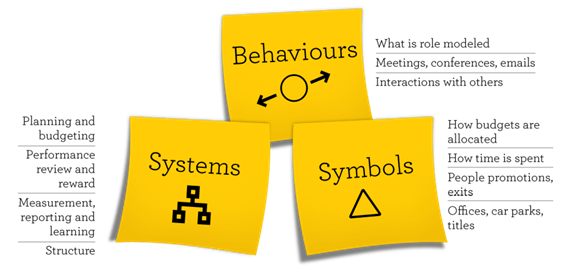At Walking the Talk, we love making explanations and definitions as simple as possible. As such, we define culture as ‘the patterns of behaviours that are encouraged, discouraged and tolerated by people and systems over time’. Every company has its own culture, whether they know it or not, and whether they choose to manage it or not.
In the workplace, we quickly learn what is acceptable and what isn’t through what we see others do, what we hear others say and how the business is set up to get things done. When we do assessments of organisations and speak to employees or stakeholders, we will on occasion hear descriptions of their workplace using phrases such as ‘permissive’, ‘negligent’, ‘irresponsible’, ‘accountability averse’, ‘risky’, ‘arrogant’, or ‘intolerant of errors’.
Our experience has shown that when these phrases are used, it is typically the case that there is an unhealthy culture present in that organisation. A culture that allows and enables unsafe behaviours.
In the worst cases, these unsafe behaviours are so entrenched in the business that they become the standard modus operandi. That’s where the biggest risks are: unsafe practices becoming part of the day-to-day. If this is the case, then it paves for the way for potential disaster.
Culture for Safety: a powerful strategy for long-lasting and strong corporate culture
Having worked with numerous organisations over the years, we know that when a company truly puts safety as its number one priority, then it is making a firm statement and is pushing its overall culture into a much healthier environment.
To put it in other words, when leaders make working towards a culture of safety their primary focus, they are instilling some key behaviours that go far beyond the basic safety performance indicators required.
Without exception, true ‘safety-first’ cultures are based on responsibility, principles and openness. When team members are given responsibility, they are empowered and are encouraged to ‘walk their talk’. This is an essential condition if a culture of safety is to emerge and is to spread within the organisation.
The opposite is also true: no safety-first culture can exist or develop if people are not truly responsible, principled and open.
By planning and implementing a strong set of behaviours, symbols and systems - starting at the very top with the leadership team - that require and reinforce responsibility, morality and openness at every opportunity, a company is well on its way towards building a culture for safety.

Once successfully implemented, leaders often learn that their safety journey enabled them to go far beyond what they initially expected, yielding much more than strong safety indicators and safety records alone.
Why so? Because the mindset that occurs as a result of a safety-first culture brings together the core qualities (responsibility, acting by principles and openness) required to instil a wider culture that encompasses various positive attributes and related behaviours and beliefs.
And that’s why we believe, support and guide our clients on their culture journey, assisting with culture management at every step. We know that when leaders consider safety as true priority of upmost importance, they are ready to discover and lead their organizations through an exciting and fruitful journey of cultural management and transformation.
For further insights view our selection of case studies, ebooks, reports and white papers or contact us to learn how we can transform your culture.

Head Office / Europe:
+31 (0) 20 240 2233
North America:
+1 (0) 212 417 0221
UK: +44 (0) 207 100 6999
Asia Pacific: +61 (2) 8310 5285
Brazil & Latin America: +55 (11) 932 500 683
(WhatsApp available)